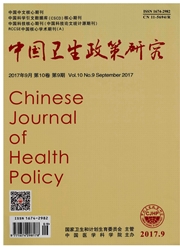

 中文摘要:
中文摘要:
目的:为基本药物和低价药品采购政策之间的衔接提供实证依据。方法:基于交易费用理论提出分析思路,通过分析各省低价药品相关政策文件的内容发现省与省之间在政策衔接方面的差异。结果:低价药品清单与基本药物目录相比,公布程序不规范,进入与退出缺少制度控制;65%以上的省份对低价药品直接挂网采购,但是仅有25%的省份坚持了经济技术标评审;60%的省没有和基本药物采购、二级以上医疗卫生机构采购建立关联;60%的省份没有规定低价药品配送政策,80%的省份没有规定低价药品回款政策;32%的省份有意识将低价药品和医疗保险目录建立关联,但是没有省份规定低价药品的报销政策。结论:两种政策在目录或清单的颁布程序、进入和退出机制、招标、采购和使用、配送和回款以及报销等政策方面均存在不衔接,这种不衔接导致药品市场的碎片化、竞争的复杂化、参与主体的交易费用增加,为解决低价药品短缺问题带来了难度。
 英文摘要:
英文摘要:
Objective: This article aims to provide empirical evidence for procurement cohesion policies between essential medicine and low-price medicine. Methods: The paper reviews the relevant transaction cost theory and presents the study framwork that was confirmed by the content analysis from relevant provincial policy documents on low-price medicine. Results: Compared with essential medicine lists,low-price medicine lists lacked standardized procedures and institutional control for market entry and exit. More than 65% of provinces directly purchased lowprice medicine online,but only 25% of provinces insisted on an economic and technological standards review. 60%of provinces did not build relationships with essential medicine suppliers and public hospitals. There was no pharmaceutical delivery policy in 60% of provinces and no pharmaceutical payment policy in 80% of provinces. 32% of provinces intended to establish connections between low-price medicine and medical insurance lists,however there were no reimbursement policies of low-price medicine in China. Conclusions: Two polices lacked cohesion in terms of list promulgation,market entry and exist mechanisms,bidding,procurement,utilization,deliveries,payment and reimbursements,which led to difficulties in resolving the shortage of low-price medicine because of pharmaceutical market fragmentation,complex competition,and increasing transaction costs.
 同期刊论文项目
同期刊论文项目
 同项目期刊论文
同项目期刊论文
 期刊信息
期刊信息
